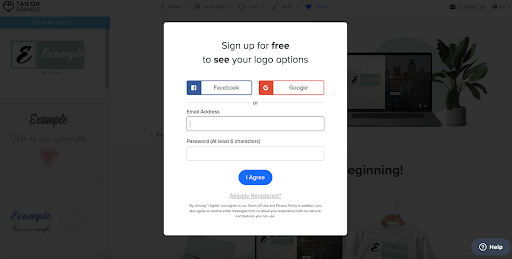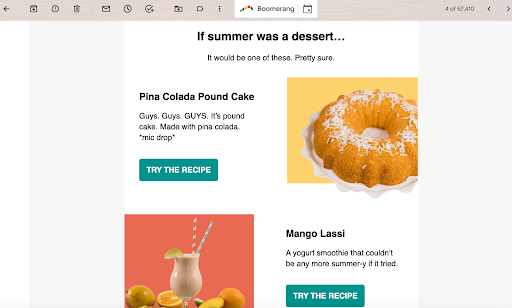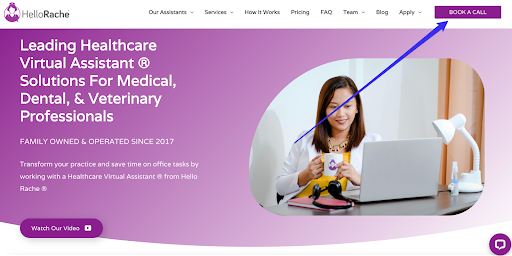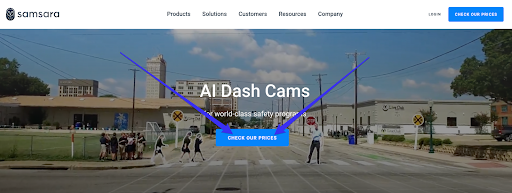Leads are the lifeblood of your company. A regular influx of fresh leads can help you counteract customer churn and build your base to keep your business in the black.
But not all leads are created equal, and your time as a marketer is precious. That’s why you need airtight lead scoring criteria to help you decide where your email marketing time and effort are best spent.
What is lead scoring, you ask? Lead scoring is the process of assigning a numerical value to your leads based on certain criteria that shows a prospective customer’s level of interest and likelihood of conversion. Your lead scores work hand in hand with your email marketing tools to craft different experiences and touchpoints for these different audience segments.
But how does lead scoring work? How can you set up lead scoring criteria that will serve your email strategy in 2023 and beyond? That’s what we’re going to address in this article.
Setting clear and measurable goals
Before we can start setting up your lead scoring criteria, we first have to decide what we want to accomplish through email marketing.
Are your email campaigns designed to increase brand awareness? Are they pushing specific promotions? Determine the actions you want customers to take when looking at your emails. But ask yourself how these actions will lead them to your ultimate email marketing goal, which is a sale.
For every campaign you launch, have a set of clear goals that outline how this contributes to the overall sales funnel and moves your prospective customers toward becoming paying customers.
Define the measure of success
What does email marketing success look like for you?
For some campaigns, this could be click-throughs. For others, it might be sign-ups for a webinar that allows you to gather valuable data to use in further marketing efforts. Of course, success means conversion for some, but that shouldn’t be the only measurement. The sales process is a journey, and lower-scoring leads will need to be coaxed down that road slowly.
For example, the free AI logo maker for Tailor Brands requires customers to sign up with an email address to view finished product options.

So while not creating a monetary sale, success is measured for this business through sign-ups. The company then uses the information it receives to create a mailing list filled with warm leads for its larger full-service business building company.

The diet food company Keto Chow includes recipes that use its product in email blasts with the hope that users will follow through to its website and purchase the products. For them, success would be measured through two criteria — click-throughs and conversions.
Define the value of each conversion
Once you know what success means for your emails, determine how much value that success carries. Obviously, a conversion would be very valuable, but there’s also value in non-monetary successes.
This will help you associate value with your leads based on the score you give them and where they are in your sales funnel.
How to build lead scoring criteria for your email strategy in 8 steps
- Analyze the state of past email marketing efforts
- Divide your leads based on their buying journey
- Prioritize each lead audience segment
- Map out the marketing and sales funnel
- List your current email service providers and their features
- Identify roles and responsibilities
- Identify areas for automation
- Determine marketing channels for each stage of the funnel
1. Analyze the state of past email marketing efforts
Before setting your lead scoring criteria, look at your past email marketing successes and failures. Where did you see the most success? Who were the customers that converted, and what did their journey look like?
Where did they come from? What actions did they take throughout their journey? You can use these past results to inform your lead scoring criteria.
2. Divide your leads based on their buying journey
Divide existing leads into four categories based on their current place in your sales funnel.
These are:
- Cold Lead: A low-value contact that hasn’t been moved into the sales process yet.
- Prospect: A qualified contact that has been moved into the sales funnel through early touch contact.
- Marketing Qualified Lead (MQL): Someone who has interacted with your marketing team directly, whether through a conversation or by filling out an online form. They’re interested but not yet ready to buy.
- Sales Qualified Lead (SQL): Someone who has moved through the sales pipeline and is actively ready to convert.
3. Prioritize each lead audience segment
Once you have your audience segmented, assign value to each level. Sales Qualified Leads should take priority, as they’re the closest to conversion. Your cold leads should receive the lowest level of urgency since they’re the farthest away from any profitable action. However, that doesn’t mean you should ignore them.
Consider SQLs high priority, MQLs priority, prospects low priority, and cold leads as the lowest priority.
4. Map out the marketing and sales funnel
Determine what the journey through your sales funnel looks like for each segment of your audience.
The sales funnel usually is composed of:
- Awareness
- Discovery
- Consideration
- Decision
Your cold leads haven’t even moved into the funnel yet, while your prospects might be in the awareness phase. The MQLs would be in discovery, and your SQLs are in the consideration and decision phases. The emails you send these people should be dictated by their place in the funnel.

The healthcare virtual assistant company HelloRache has a CTA on its site that says “Book a Call.” Leads that click on this button would instantly be labeled MQLs and thus be considered in the discovery phase of your funnel.

If someone is checking out Samsara’s fleet dash cams and clicks on its “Check Our Prices” page, they’re taken to a questionnaire that develops a price quote based on their needs. This is a strong move toward conversion, which the sales team can become involved in through email outreach. That would make this an SQL and put this person in the Consideration phase of the funnel.
5. List your current email service providers and their features
Which email marketing tools are you using? What special features do they have? Many email marketing tools can apply your lead scoring criteria, assigning numerical values to specific actions.
Determine which service provider best suits your needs, and build your email marketing plan around its scoring capabilities.
6. Identify roles and responsibilities
Once you’ve implemented your lead scoring criteria, ensure that you know who can access this data and make changes. Ideally, this should only be a small group of higher-ups, including your marketing manager, sales manager, and ranking executives.
Lead scoring criteria changes should only be made when data points to inconsistencies or deficiencies. Lay out the process for changing the criteria with a proper chain of command.
7. Identify areas for automation
Determine where you can implement automation to make your email marketing campaigns more effective. For example, lead scoring automation can be applied through your email marketing tool and CRM.
For example, someone who clicks on a link in your email should be assigned a certain number of value points. All actions taken by your customers should receive points and be used as the measuring stick that shows where they are in the sales funnel.
Applying automation to this process removes human error and gives your employees fewer mundane tasks.
8. Determine marketing channels for each stage of the funnel
Your marketing outreach should differ based on someone’s funnel stage.
For example, someone in the Discovery phase should receive emails and phone calls to help move them toward the Decision phase. Someone deciding on their purchase should be contacted directly by the sales team. Use data derived from previous successes and failures to determine the frequency of contact and most effective channels.
Cold leads and prospects should be contacted more sparingly, as you don’t want to push too hard. Consider sending them periodic touch emails based on their behaviors. Use varied subject lines and content to capture their attention depending on what stage of the funnel they’re in. If you’ve sent someone 15 emails without action, they should be considered very low priority.
Key takeaways
Lead scoring can be an effective part of your email marketing strategy, but only if it has been carefully laid out and set according to hard data.
Your system should be weeding out your least engaged prospects automatically and assigning priority levels to leads based on their on-site and off-site behaviors. By investing time into creating solid lead scoring criteria, you’ll be able to prioritize your efforts to build your client base and keep all communications relevant and effective.
About the author
Shane Barker is a digital marketing consultant who specializes in influencer marketing, content marketing, and SEO. He is also the co-founder and CEO of Content Solutions, a digital marketing agency. He has consulted with Fortune 500 companies, influencers with digital products, and a number of A-List celebrities.
Don’t forget to share this article
Related articles
Nothing found.